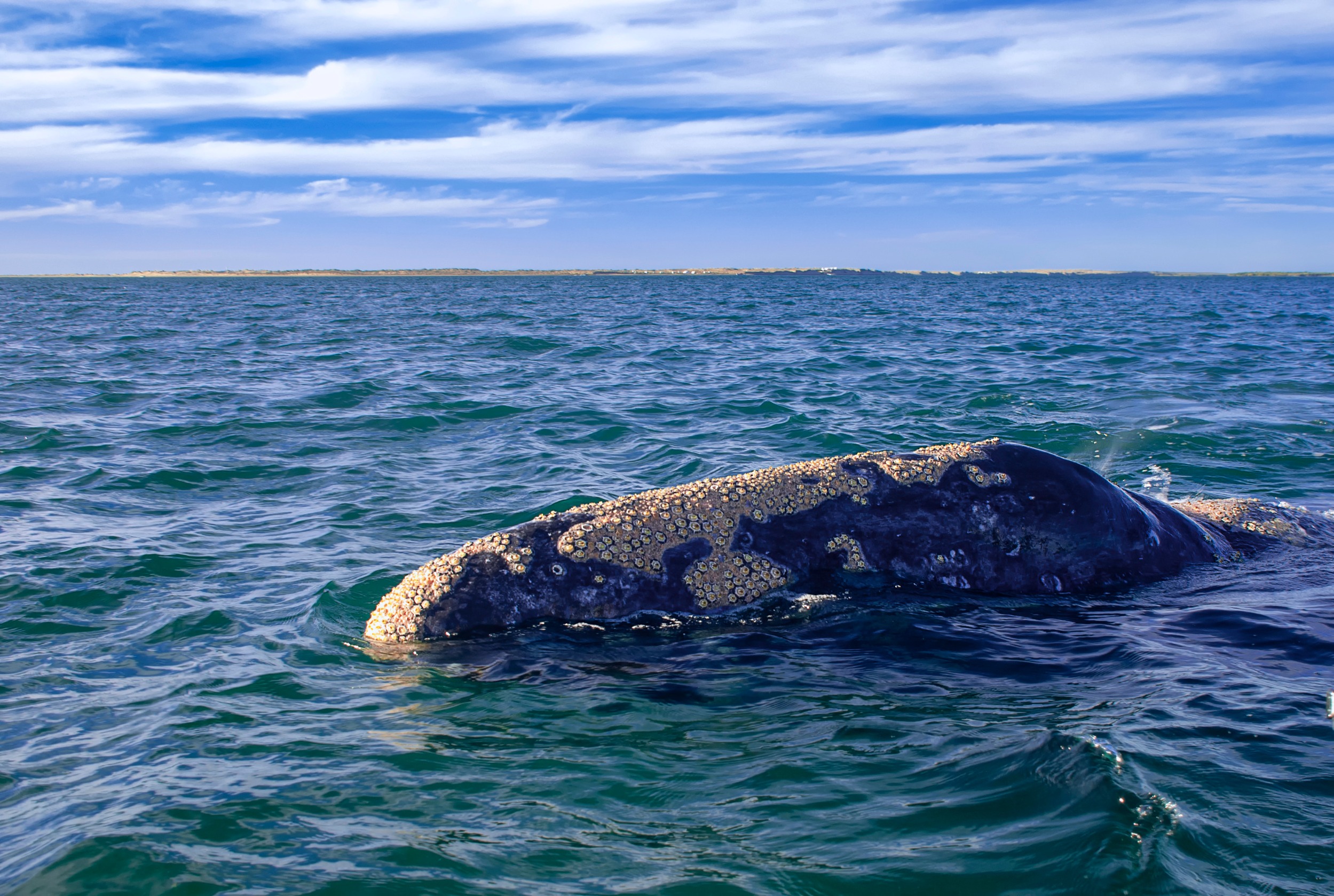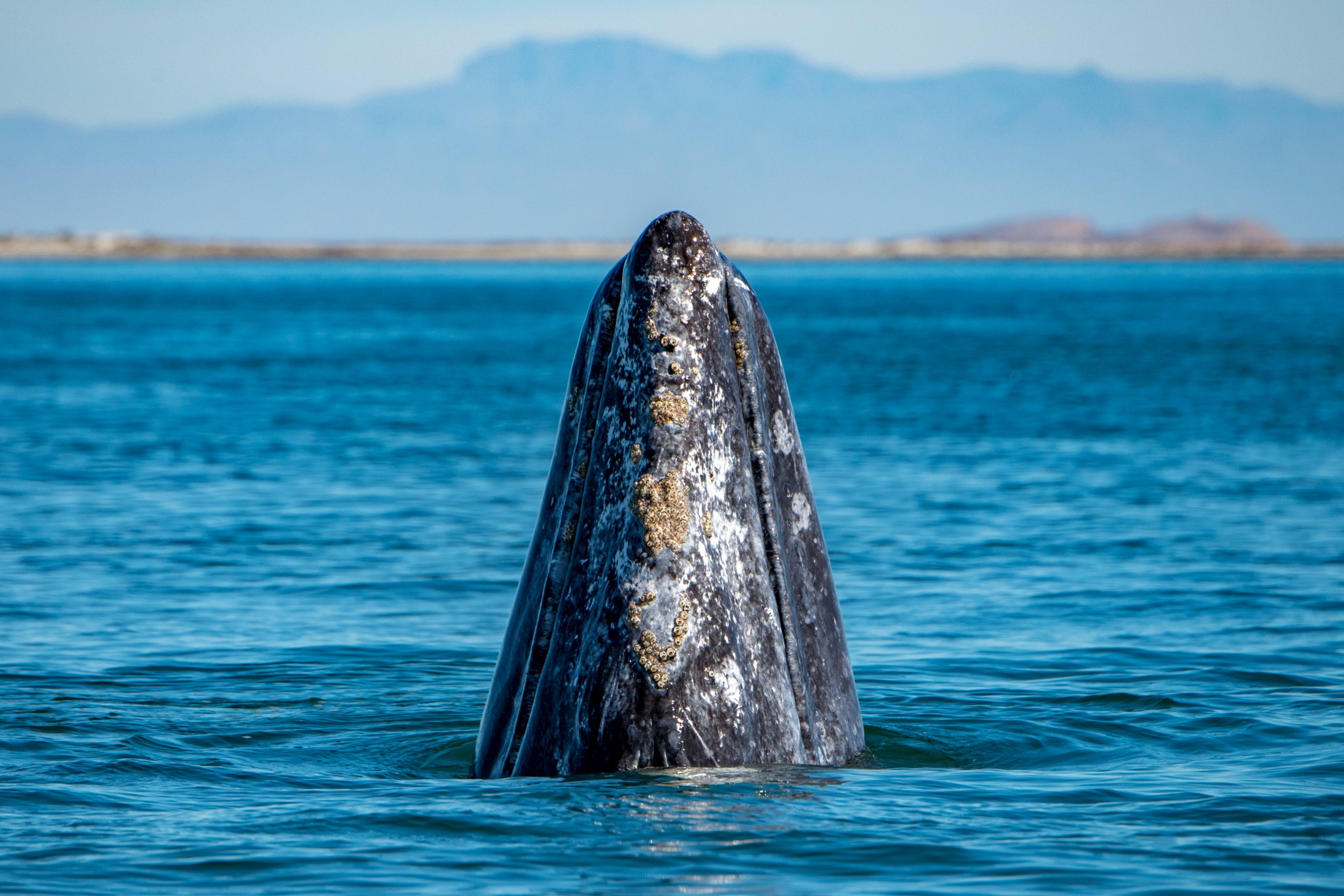Gray Whale Migration: When To See Gray Whales in San Diego

When you live in or visit coastal California, the gray whale is one of the most impressive sights you can see. These massive mammals were near extinction before the 1930s and 1940s conservation laws prevented their demise. This protection was further extended by regulations that ended whaling in the mid-1980s. To see these fantastic creatures, you should understand gray whale migration patterns.
Gray Whale Overview
Gray whales are baleen whales but have no dorsal fin and a smaller head than others in this category. They also have bumps on their back that are other living crustaceans called barnacles. They are gray with grooves in their throat area. Females are larger than males at 46 feet to males 43 feet in length, while you can expect newborn calves to be about 16 feet long and 2,000 pounds.
These mammals get their food from sediment on the sea floor. They roll on their sides or slowly swim along the floor and grab up mysids, polychaeta tube worms, tube-dwelling amphipods, red crabs, herring larvae and eggs, mobile amphipods, megalops, and cephalopods.
Gray whales live about 40-60 years but become sexually mature around eight years old. They gestate for about one year before giving birth between December and February. Calves become weaned after seven months.
Gray whales are no longer found in the Atlantic Ocean, but the Eastern Pacific population has rebounded to about 15,000-20,000 adults. The Western Pacific population is still low at approximately 100 adults.
Where Do Gray Whales Migrate To?
Did you know that gray whales migrate 10,000-14,000 miles round trip? They move to warm water in Mexico during the cold months to mate and give birth. California gray whales typically migrate to lagoons in Mexico, including Laguna Ojo de Liebre, San Ignacio, and Magdalena. If you ever have the chance to go, it is an experience of a lifetime. Not only do gray whales give birth, but they also get to enjoy a spa experience. There are fish that will feed on any excess debris found on the gray whales so that the whales are more hydrodynamic in the water.
These whales live in the northern Chukchi and Bearing seas in the summer. You can also see them along the North Pacific coast, around Alaska, Washington, British Columbia, Oregon, and northern California.

When Can You See Gray Whales in San Diego?
The best time to see gray whales in San Diego is during their migration period from mid-December to mid-March. We see different gray whales in waves. Typically, we see pregnant females first as they want to get down to Mexico as fast as possible to have their calves. Then, we start to see males and non-pregnant females. Then we see females bringing down their yearlings, who will have migrated for the first time. Then, we see the senior whales not going to Mexico to mate. Instead, they simply go for the warm water and the “spa” experience. However, if you visit in the summer, you can see blue whales from May to August.
How To See Gray Whales?
Because they prefer shallower waters, you can see gray whales from the shore in California. To see these whales, visit the Birch Aquarium at Scripps, Torrey Pines State Reserve, and the Cabrillo National Monument in San Diego. Coastal hiking trails provide ocean views where you can see these mammals. You can also see them from the shorelines in Monterey Bay, such as in Pt. Lobos State Natural Reserve.
You can also charter a boat or join one of several whale-watching excursions. You can lease a kayak and visit different whale areas as well. However, you should have a guide and stay at least 100 yards away from the whales as they are protected under the Marine Mammal Protection Act. It is typically best to view gray whales from the water.

What To Expect
Fortunately, the gray whale is a gentle creature. They do not threaten humans when you are in the water with them, but they are curious. Therefore, they may approach your boat or kayak. You may even have an up-close encounter with them breaching by your boat.
Bring a pair of binoculars if you plan to view them from land. You can also bring a camera, but make sure you have a zoom lens. Search for water spouts. You will see whales breach or fluke when their tails flip out of the water as they prepare to dive.
Seeing gray whales during their migration is an incredible event, so if you are in the southern California area, get on the water or find a trail to get a front-row seat.